What is Ethereum 2.0? How does Ethereum 2.0 affect ETH price?
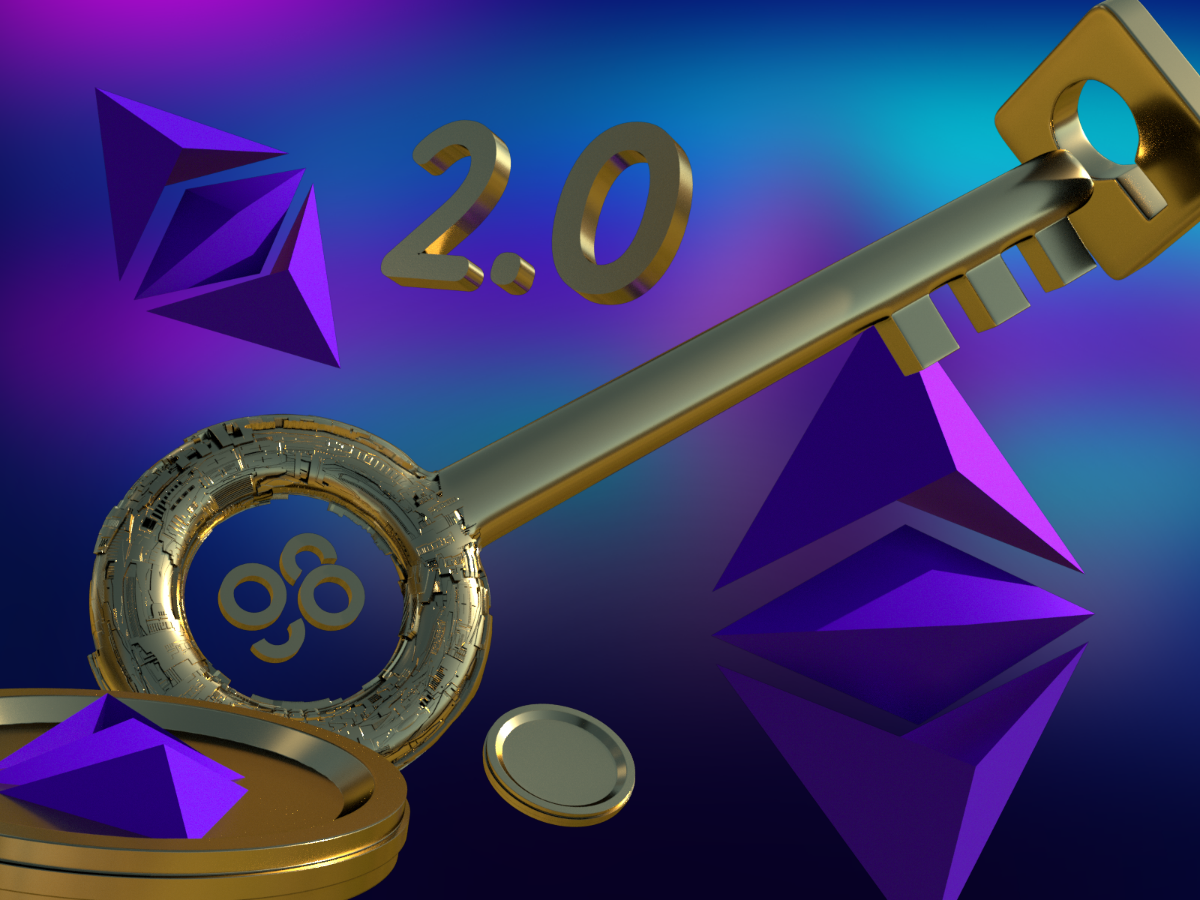
What is Ethereum 2.0?
Ethereum 2.0 is an upgrade to the Ethereum network that switches the Proof of Work (PoW) consensus mechanism to the Proof of Stake (PoS) consensus mechanism and applies Sharding to speed up transaction processing.
As a result, the switch to PoS will aid Ethereum in overcoming the traditional drawbacks of the PoW system, including poor performance, expensive transactions, scalability issues, and network security issues.
To help you comprehend the distinctions between these two mechanisms:
- Proof of Work (PoW): Miners employ computing power to solve puzzles resulting in hashes. Upon completion, they will be granted the ability to approve transactions and add new blocks to the Blockchain.
- Proof of Stake (PoS): Unlike Proof of Work (PoW), this technique does not use miners to validate transactions; participants must stake a significant quantity of tokens to earn the right to validate transactions and generate blocks. PoS hence ensures great performance while requiring fewer expensive miners.
As a result, Ethereum 2.0 can be seen as an enhanced Hard Fork of Ethereum.
Ethereum Hard Fork
What is Hard Fork?
A hard fork is when the blockchain's rules are modified. A hard fork will occur once the blockchain is operational and will continue to function under the new regulation. After the hard fork, the new blockchain will not accept blocks that adhere to the old rules.
A typical method of upgrading in the blockchain is the hard fork. Hard forks are used by many cryptocurrencies, including Steemit, Litecoin, and Bitcoin, to upgrade.
Hard Fork Istanbul
The Istanbul hard fork is named after the largest city in Turkey - Istanbul. The hard fork took place successfully on December 8, 2019.
Istanbul hard fork has 6 outstanding upgrades: EIP-152, EIP-1108, EIP-1344, EIP-1844, EIP-2028, EIP-2200 around 3 main contents:
- Improved Ethereum performance makes the network more efficient.
- Cost adjustment.
- Connecting Ethereum and Zcash: Thanks to that, Ethereum can later use the transaction document protection protocols on the Zcash network applied on the Ethereum network.
Road to Ethereum 2.0
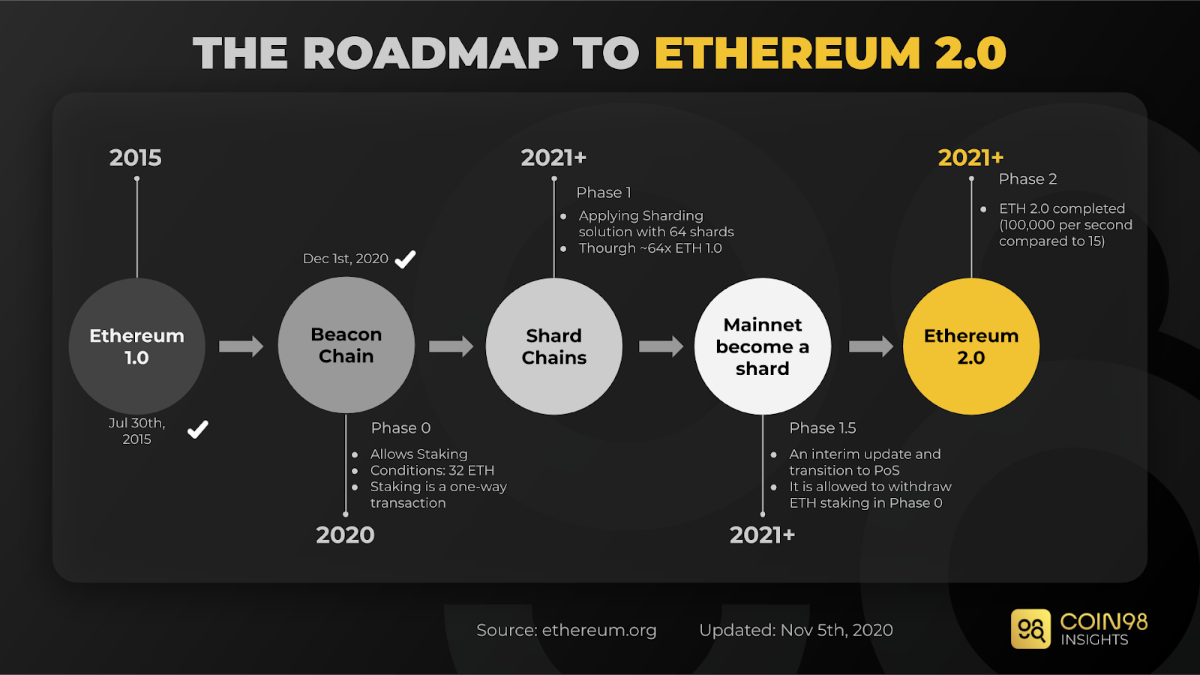
The conversion process is divided into 3 sub-stages:
Phase 0 - Beacon Chain
The transition from PoW to PoS is still in its initial phase. At this point, the Ethereum network will be running two blockchains concurrently, each using a different consensus algorithm:
- The current Ethereum blockchain, ETH1x, uses the Proof of Work consensus process and contains an ETH1 native token (essentially ETH at the moment).
- A new blockchain called Beacon Chain uses the Proof of Stake consensus method and contains an ETH2 native token. Transferring ETH1 to ETH2 will allow you to stake and profit. Staking requires a minimum of 32 ETH to be present.
The important thing to remember at this stage 0 is that you cannot withdraw your ETH when you convert it to ETH2 for staking.
Phase 1 - Shard Chains
The Shard Chain stage of implementing the sharding solution, also known as the sharding solution, helps to split data into numerous little bits that can be processed simultaneously to aid in the Ethereum network's increased performance.
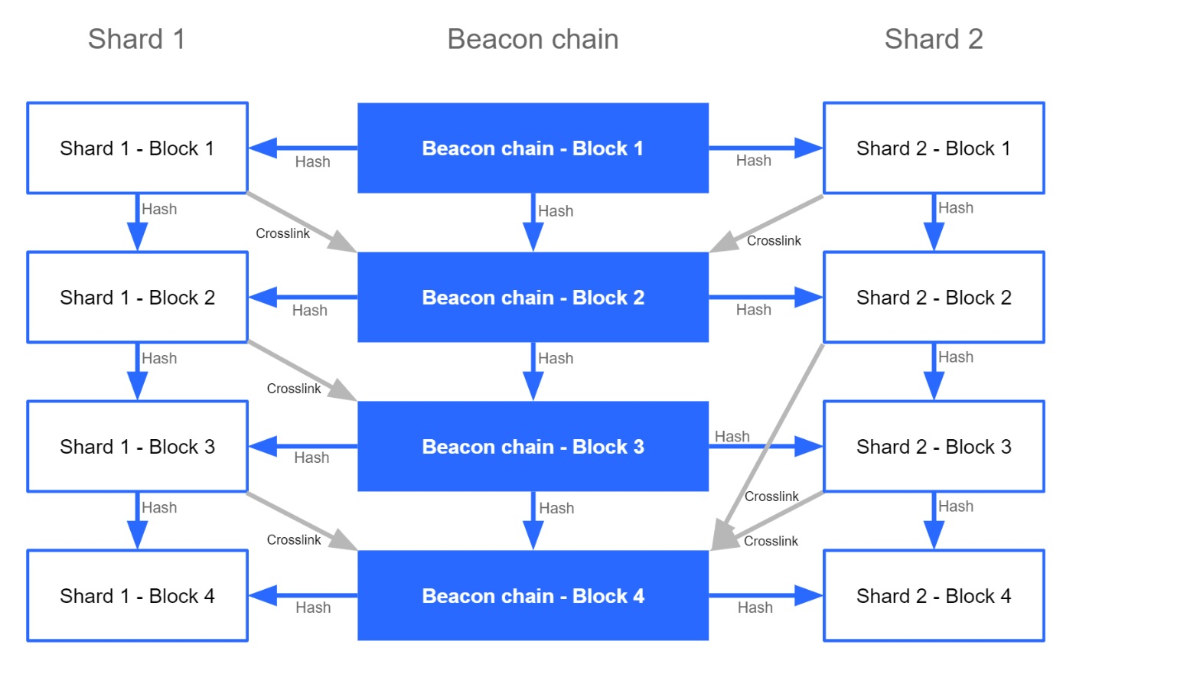
1,024 shards were supposed to be used in the initial deployment of the Shard Chain. Later, though, only 64 shards remained. As a result, by Phase 1, the Ethereum network will consist of:
- Eth1x native blockchain.
- Beacon Chain in phase 0.
- 64 new segment sequences.
Phase 2 - State Execution
This one is the most crucial step in moving all applications, data, and ETH from the existing network to the Ethereum 2.0 network. At this point:
- Segments can communicate with each other.
- The smart contract function will be activated.
- EVM virtual machines will be upgraded to eWASM virtual machines to reduce gas costs and increase system security.
- The network using the PoW system will stop working. And let's see that Ethereum has successfully transitioned to a PoS system.
The Economics of Ethereum 2.0
The dev team anticipates that Ethereum will finish switching from a PoW to a PoS mechanism in 2021. Numerous changes will result from the transformation. The economics of Ethereum 2.0 is among the major changes:
- The amount of ETH released annually under the PoS scheme will be significantly less than under the previous PoW system. According to Justin Drake, researcher at the ETH Foundation, the value of Ethereum will drop ten times from its current level in 2021. With fewer supplies, there is less pressure to sell. Additionally, the price of ETH will increase with an increase in demand, enabling investors to profit. The fact that the ETH network is still the best and the easiest to secure despite the smaller supply matters most.
- Ethereum 2.0 will significantly alter the economy by lowering inflation to a range of 0 to 1 percent, far lower than the current inflation rate of 4.8 percent. This is a significant element that will affect ETH's value in the future.
- In addition, the development team claims that operating a Validator in a PoS system will be far less expensive than purchasing miners in a PoW system. This enables users to make more from ETH mining.
How does Ethereum 2.0 affect ETH price?
There is a good chance that the price of ETH will change when significant milestones are reached. For example, upon the news of the release of the Ethereum 2.0 top-up wallet, the price of ETH regularly rose by more than 10%.
In short term - From phase 0 to the end of phase 2
1. Supply - Sell Demand
Because the amount of ETH brought to market equals the sum of the ETH1 mined from the ETH1 network and the ETH2 staking incentives in the Beacon Chain, the supply of ETH will rise.
The inflation rate for ETH1 as of right now is 4% annually. The quantity of ETH1 staked in Beacon Chain will determine the inflation of ETH2. The graph below shows that clearly:
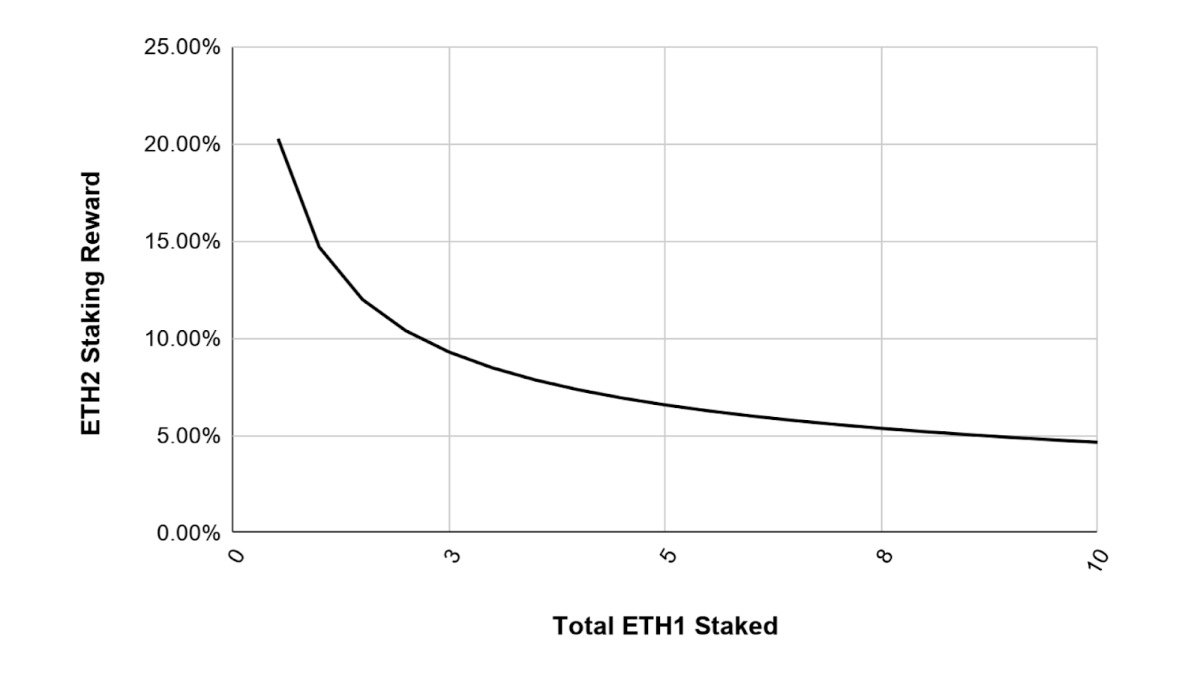
As you can see, ETH2 will have a reward rate of 4.97 percent annually, with 10 million ETH1 staked. The rate of ETH2 inflation relative to the overall Ethereum network.
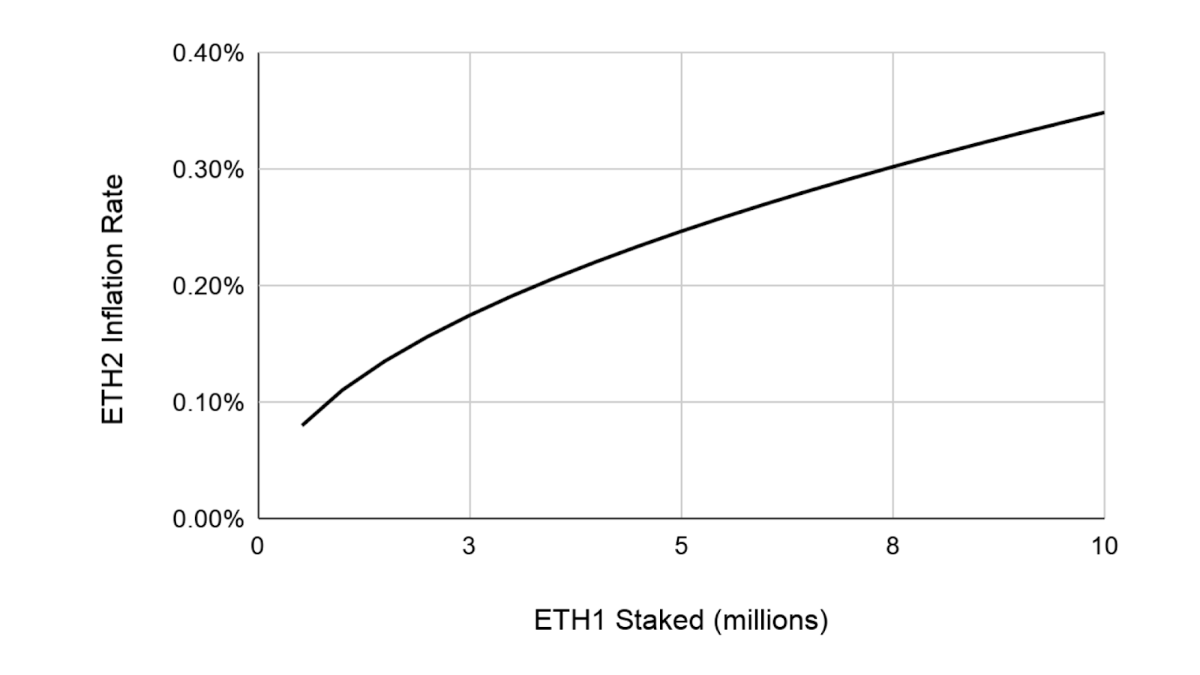
Therefore, in the ideal scenario where there are 10 million or more ETH1 staked in the Beacon Chain, the annual inflation rate of ETH will be less than 4.35% (ETH1=4%, ETH2=0.35%).
2. Buy Demand
When customers purchase ETH1 to remove staking, the first need is the most obvious. As you can see, the amount of ETH1 staked decreases as ETH2 inflation increases, therefore, a lot of individuals will likely stake for the first time.
The second demand stems from the booming ecosystem at the time, which makes it necessary to purchase ETH to pay for transaction fees when utilizing Ethereum-based applications.
In long term - After the Ethereum 2.0
The ETH1 network won't be able to mine after the two Ethereum networks merge, resulting in the Beacon Chain's anticipated 1% inflation being applied to the whole Ethereum 2.0 network.
When Ethereum 2.0 has a substantially better processing capability than ETH1x, there will be greater demand for ETH. More users, DApps, and ETH are all used.
Risks of deploying Ethereum 2.0
- The consolidation phase poses the greatest risk; Ethereum will break into two separate chains if the merge fails. This impacts decentralized applications created on Ethereum. In particular, DeFi dApps, where billions are locked in smart contracts.
- The second concern is that delayed upgrades of the stages will impact the Ethereum development initiatives. This is nothing new because Phase 0 was recently launched after numerous delays.
- The consolidation of numerous DeFi dApps may bring additional risks during the consolidation process.
Conclusion
With Ethereum 2.0, the proof-work-mining structure will be completely replaced with staking. Due to this, mining as we know it will become outdated, and miners will need to switch to staking to validate transactions for block rewards and transaction fees.